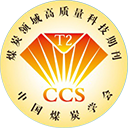Abstract:
In order to study the stress disturbance characteristics of the overlying residual coal pillar on the lower coal seam in contiguous seams, taking the geological conditions of Huojitu Well in Daliuta Coal Mine as the engineering background, the stress distribution law of the coal pillar floor of 1
-2 coal seam with a width of 10 m to 20 m was studied by means of theoretical analysis, numerical calculation and physical similarity simulation. The results show that the influence angle of the residual coal pillar with a width of 10 m on the stress disturbance of the lower strata is 10° on the left side of the coal pillar and 19° on the right side, and the stress concentration degree on the right side is higher than that on the left side. The influence angle of the residual coal pillar with a width of 20 m on the stress disturbance of the lower strata is 14° on the left side of the coal pillar and 11° on the right side. The peak stress is located directly below 1/3 on the left side of coal pillar, and the stress concentration on the right side is lower than that on the left side. The stress disturbance range of residual coal pillar of 1
-2 coal seam with a width of 10 m to 20 m to 2
-2 coal seam is 42 m to 47 m. The research results have certain theoretical and application value for determining the layout position of mining roadway and the range of roadway reinforcement support in lower coal seam in contiguous seams, and can provide reference for roadway stability control under similar working conditions.



 下载:
下载: